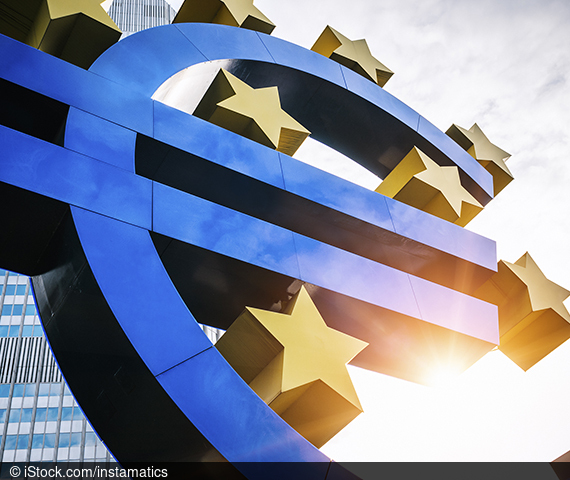The Legacy of Mario Draghi
OpinionZEW’s Achim Wambach on the Outgoing ECB President
On October 24, Mario Draghi chaired his last meeting of the European Central Bank’s (ECB) Governing Council. After eight years as president, Draghi will depart from the ECB at the end of the month, having shaped it like no one before him. ZEW President Achim Wambach looks back on Draghi’s tenure as head of one of the world’s most important central banks.
One phrase is associated with Mario Draghi more than any other: ‘Whatever it takes’. He made this statement during a July 2012 speech in London to underline the ECB’s firm resolve to preserve the euro. At the time, long-term interest rates in Greece had skyrocketed to almost 28 per cent, while 10-year government bonds were hovering around 10 per cent for Portugal, Spain and Italy. A collapse of Italy’s economy in particular would have brought the eurozone to its knees. After Draghi’s speech, long-term interest rates quickly returned to sustainable levels. Draghi successfully managed the crisis by finding careful language that could soothe nervous financial markets. With Draghi at the helm of the ECB, market communication became a strategic component of monetary policy.
His influence did not stop there. At the end of 2011, the deposit rate – the rate of interest that banks receive when they deposit money with the ECB – was 0.25 per cent. Since then, it has fallen to minus 0.5 per cent. In March 2016, the interest rate at which banks can lend money from the ECB fell to 0 per cent and has not moved since. Due to an extensive asset purchase programme, the ECB balance sheet grew beginning in March 2015 from 2.6 billion euros to almost 4.7 billion euros.
The ECB was not the only central bank that cut interest rates and purchased bonds to stimulate the economy and reduce the risk of deflation. In response to the financial crisis triggered by the collapse of Lehman Brothers in September 2008, the Federal Reserve lowered the benchmark rate from 3.5 per cent to a range of 0–0.25 per cent by the end of the year. Likewise, the Fed started an ambitious bond-buying programme to stabilise the US economy. In the process, the Fed’s balance sheet ballooned to 4.5 billion US dollars in 2015, more than quadruple its volume in 2007.
It is crucial that the ECB become more transparent
Were these drastic interest rate cuts and bond purchases needed to manage the financial crisis, or would a more moderate approach have sufficed? This question was widely debated at the time, and continues to be today. Though few academic economists doubt the necessity of these measures, the recent interest rate cuts of the ECB, together with its internally controversial decision to resume bond buying, show that these instruments are nearing their limits. There’s scarce room for the deposit rate to fall any lower, and bond-buying programmes to reduce interest rates and encourage investment are unlikely to have as much effect today.
During Draghi’s presidency, the ECB’s monetary policies came under increasing fire and doubts grew about its independence as an institution. In Germany, these critical voices reached a fever pitch in the ECB bond-buying case before the country’s highest court. This growing loss of confidence in the ECB is problematic and the central bank must work to restore people’s trust in its independence. There’s a good reason why monetary policy is delegated to an independent panel of experts; otherwise, a government could drive up inflation by allowing the money supply to grow too quickly. Of course, it didn’t help matters that the ECB joined the EC and the IMF to form the European troika, where it made the implementation of austerity measures the condition of financial aid for Greece – actions that clearly exceed the remit of monetary policy.
Going forward, it is crucial that the ECB become more transparent. One way to do that is to publish the minutes of its meetings, as the Fed does, for instance. This would, at any rate, be more expedient than the current process, where opinions and disagreements in the Governing Council reach the public via interviews with individual members.
As a former investment banker, Mario Draghi understood how to communicate with markets and steer them in troubled times. His successor, Christine Lagarde, now has the task of convincing both politicians and the public at large that the ECB is ready for the years to come. Lagarde, who previously held ministerial posts in the French government, is the right person for the job. So is Isabel Schnabel, an economics professor and recent appointee to the executive board of the ECB. Her economic expertise will certainly come in handy for her work at the ECB – and help convey its policies to the German public.
This article first appeared on 24 October 2019 in the German business daily “Handelsblatt”.

